TEXT BY AASTHA GUPTA
PHOTOGRAPHS BY NAVDHA MALHOTRA
Uttar Pradesh, India
A testament to time and tradition, this Dussehra register, is a handwritten chronicle that has been maintained by my paternal family since 1972. As part of the Dussehra festival or Vijayadashmi, there is a ritual of writing script on a family bahi that Dussehra is being celebrated on this day of Hindu calendar in the presence of all the family members.
The register records the names of all family members present at that time and significant milestones and events that have taken place. It also chronicles the fluctuating prices of precious metals, currency exchange rates and petrol. My father, Jitendra Kumar Gupta tells me that this tradition existed before 1972 as well. It was started by my paternal great-grandfather and my grandfather, Shri GL Gupta continued it. “There was definitely an older register that was maintained beforehand. My father then started this one. I am sure it is around somewhere but I haven’t seen that one in a long time”, says my father.
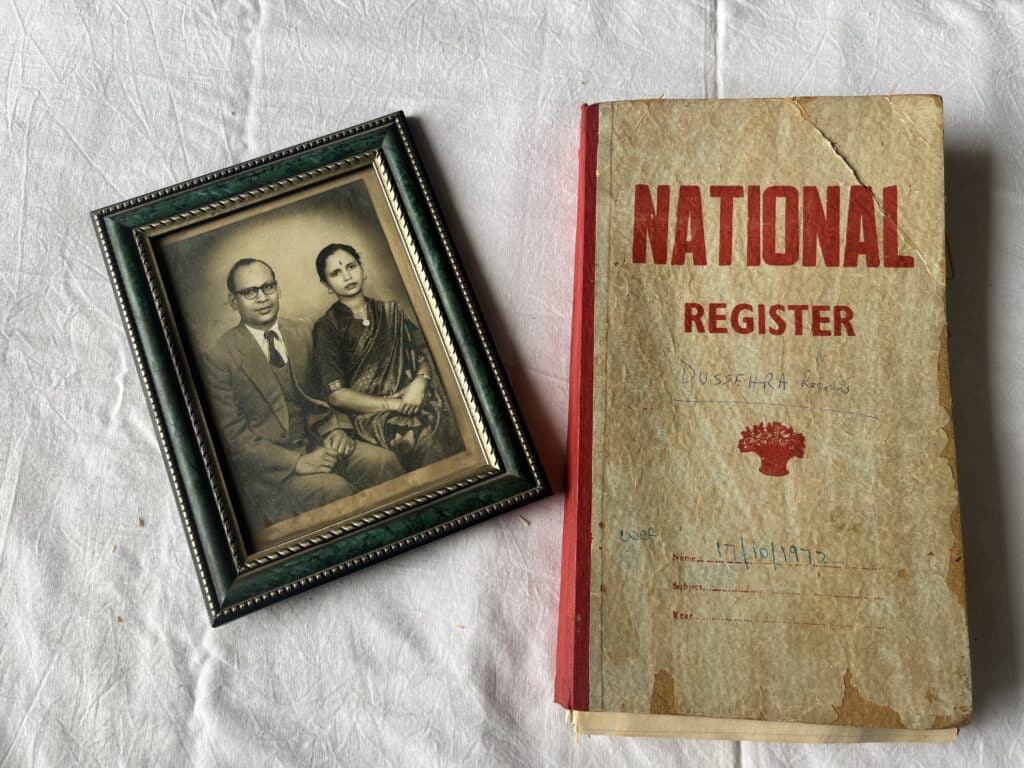
The first entry in this one is 1972 when the family lived in Bareilly and the register was probably bought there. The cover also has the date 17th October, 1972, probably written by my grandfather. The register itself is a pretty common one that can be bought at any local store. It has a hardbound cover and with time, the pages have turned yellowish, and it’s worn out but most pages are intact. It also has a distinct smell of old paper.
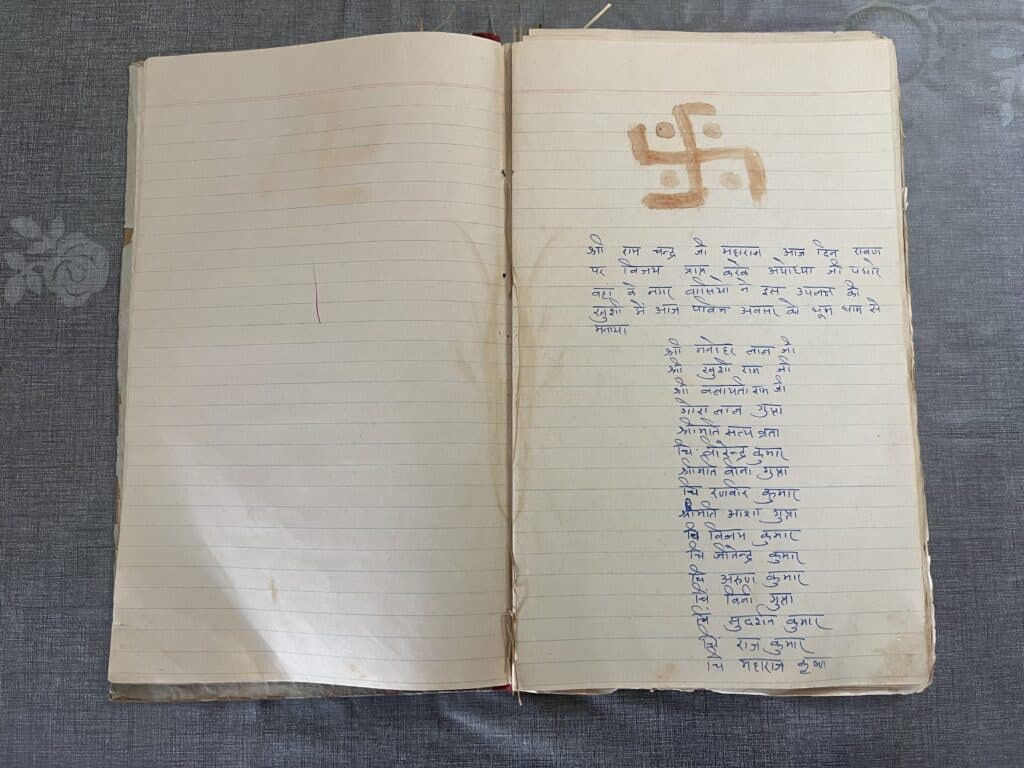
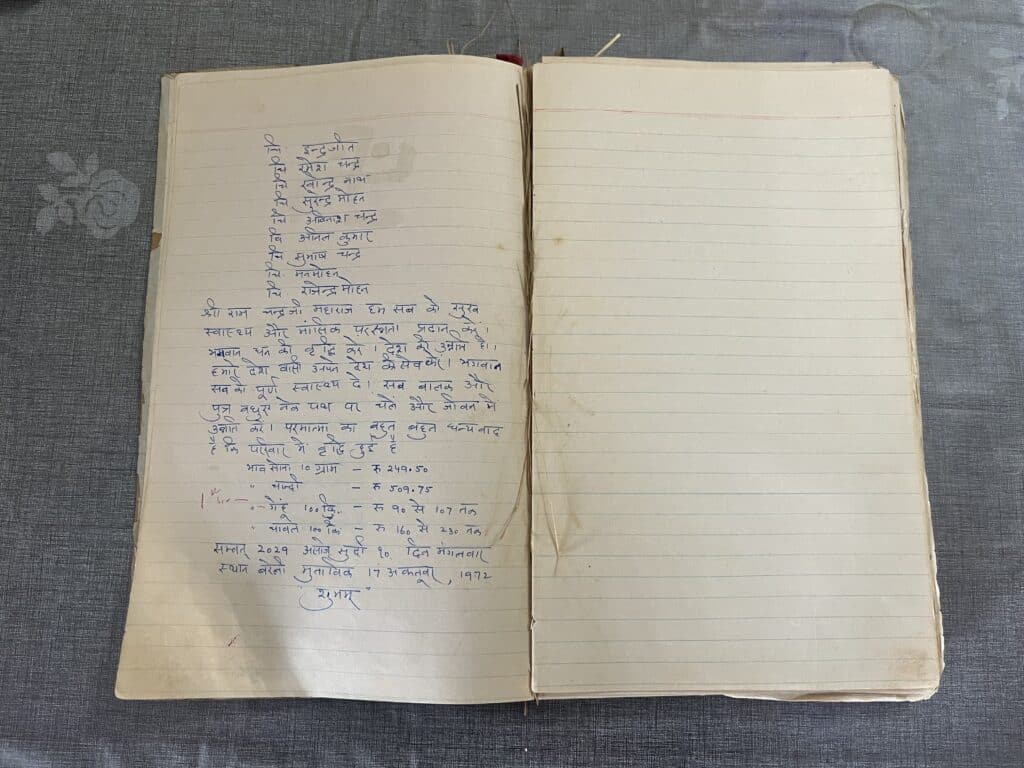
Every year on Dussehra, our whole family gets together to celebrate this auspicious occasion. The senior most member of the family, my oldest uncle recites the legend behind celebrating Dussehra and we offer our prayers to Goddess Lakshmi. Before the prayers begin, older family members make sure that the register is duly filled. Along with the names of all present family members, we record deaths of loved ones that have passed and also discuss and record achievements in the family. It’s an interesting way of keeping in touch with one another’s whereabouts and lives in an otherwise busy and fast paced world.
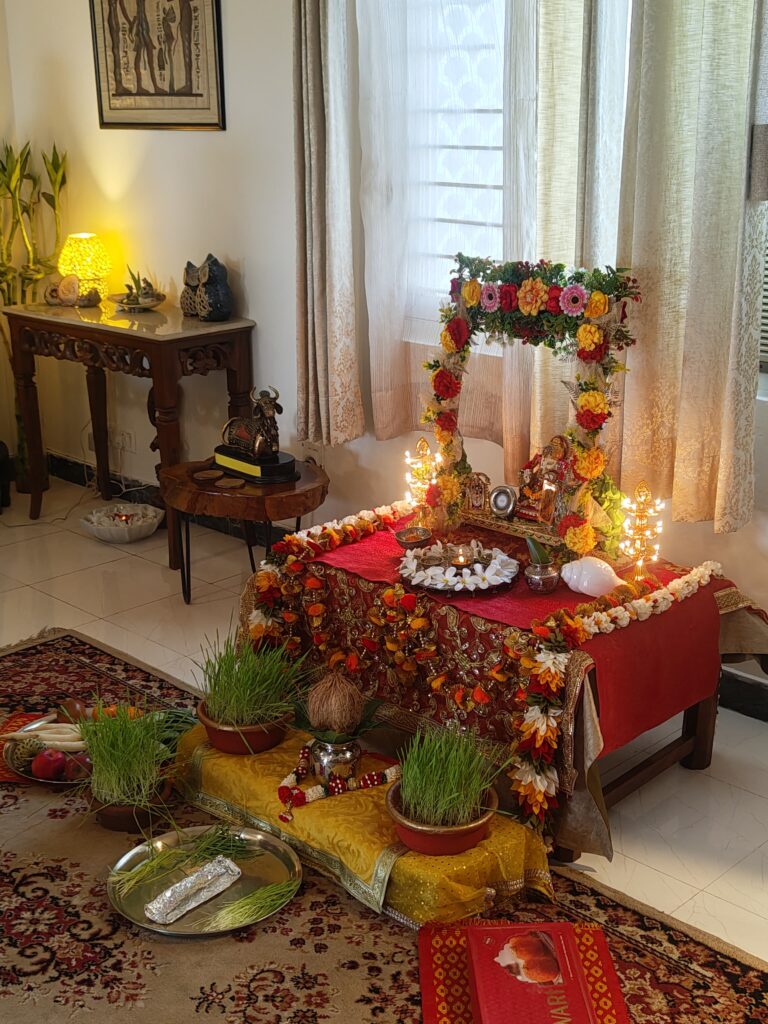
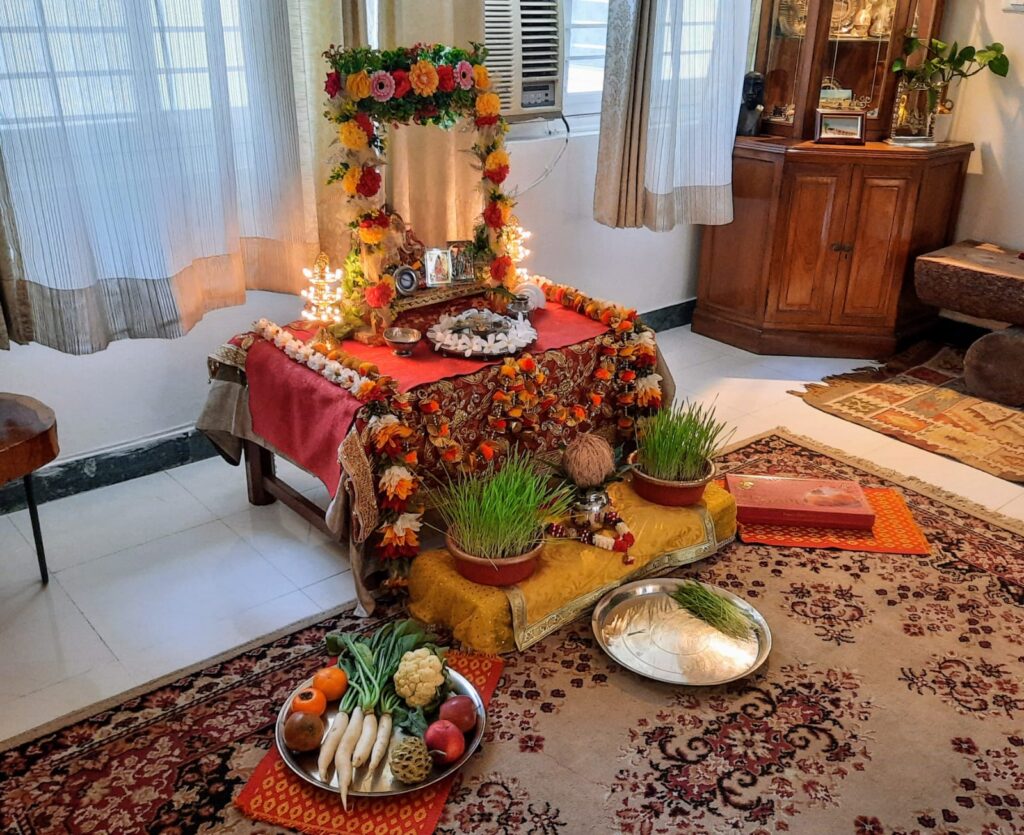
My aunt tells me that the tradition probably began because we belong to the Aggarwal community which was originally a community of traders and businessmen. It was imperative to maintain a record of the prices of these metals and various other exchange rates as part of the business and to mark a new financial year.
As our joint family structure has evolved, different versions of registers are now being maintained individually by all five sons (my father’s brothers) and their families. My father’s curiosity and passion to preserve memories, led to us retaining and maintaining the original one that was started in 1972 with a detailed account of our family spread over 5 decades. My mother, Anju, now fills this one out. “Given her fluency in Hindi and really neat handwriting, it made most sense for her to do it”, says my father.
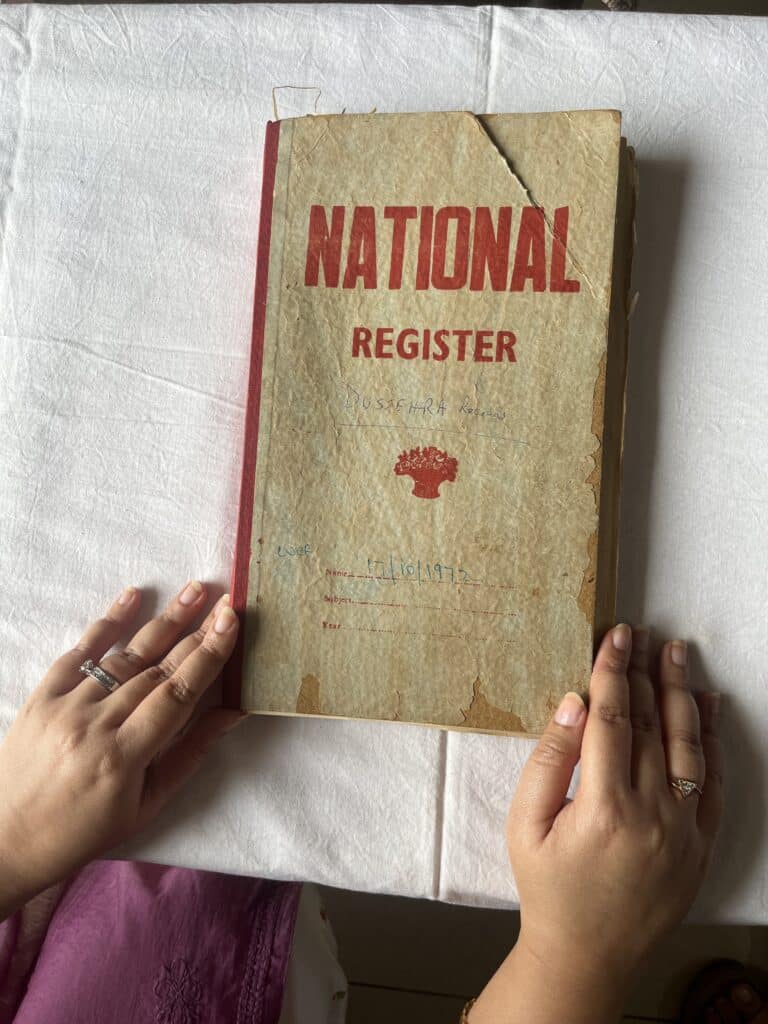
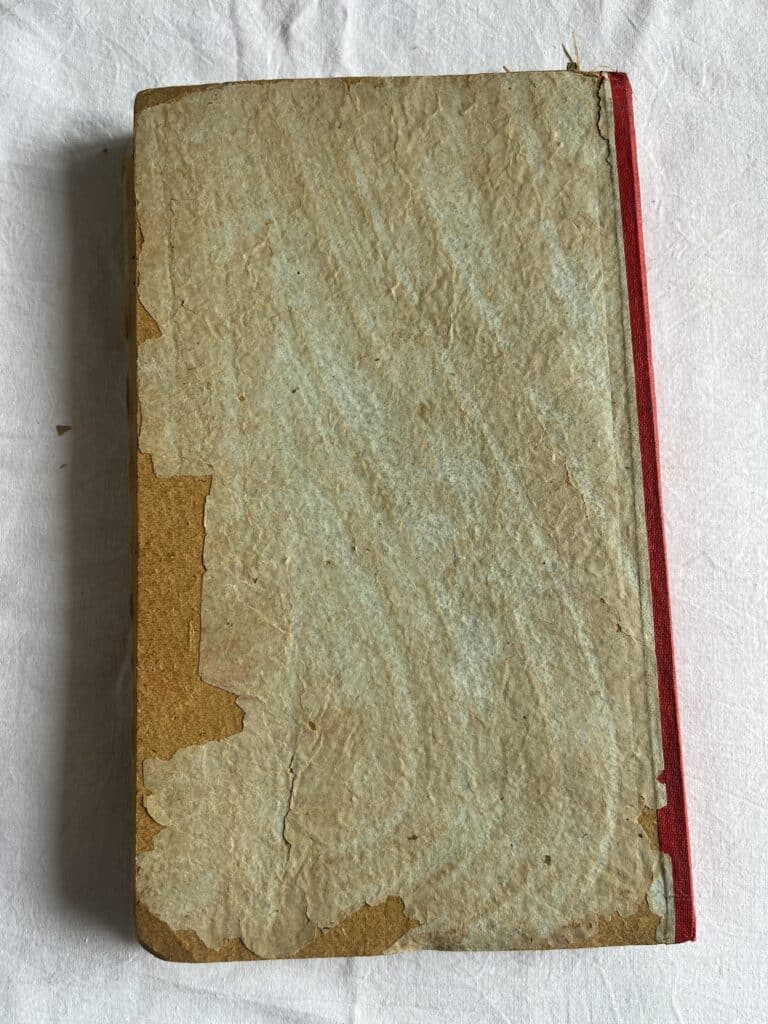
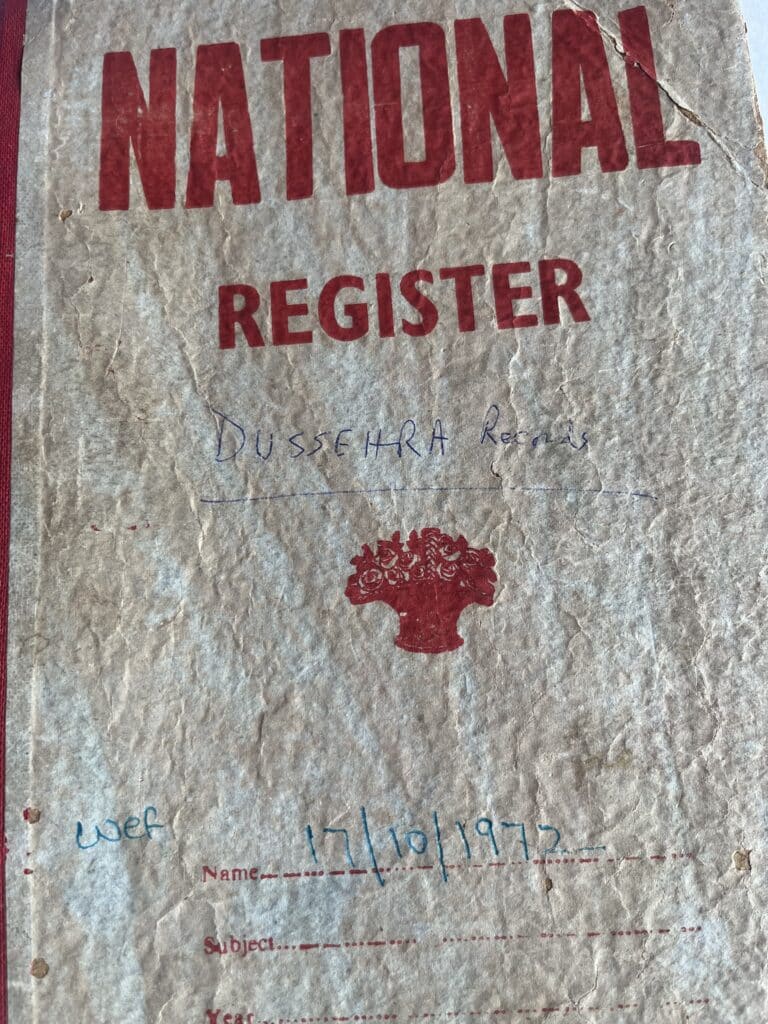
Every year, as part of the rituals, we also exchange the barley crop that has been planted and grown in our respective homes throughout the year to offer our love and regards to different family members. Barley was one of the first ever crops to be cultivated and that marks its significance for these prayers. It is said that the colour of the barley represents what the future holds for you. If it’s fully green in colour, it means the coming year will be auspicious for you. Some barley is preserved in the register and the rest is immersed in the Yamuna river. Historically, sugarcane and radish were also a part of the rituals to denote prosperity.

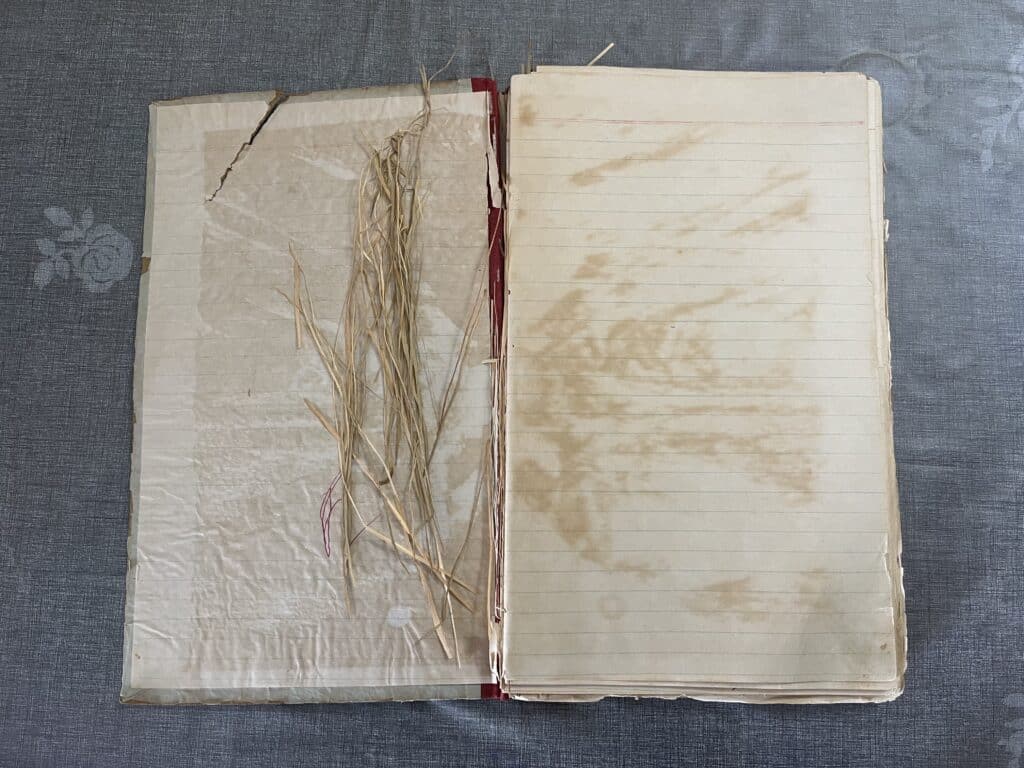
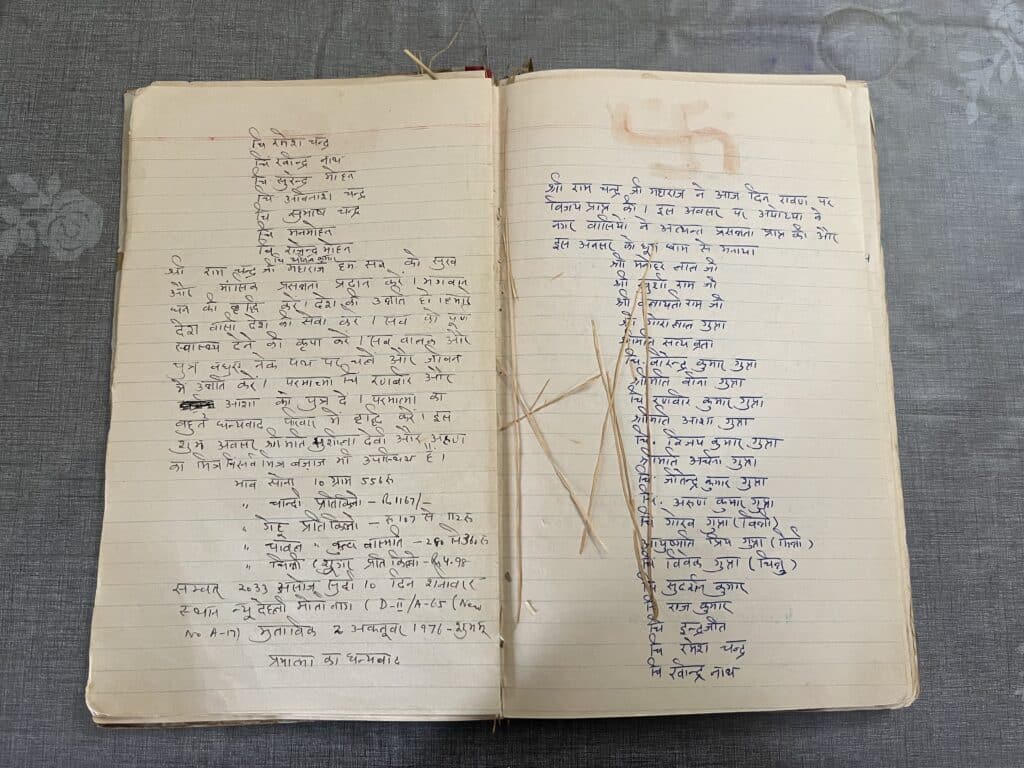
The register has a gap between 2003-2015. We lost my grandfather in 2003 and it seems that a new register was started. This one was also misplaced for some time while we shifted homes. In 2015, we were prompted to restart this one. By then most of the family had started documenting individual ones but we thought it important to continue the tradition and ensure as many entries in one place. Luckily, the information between 2003-2015 is in the other register and remains accessible to us.
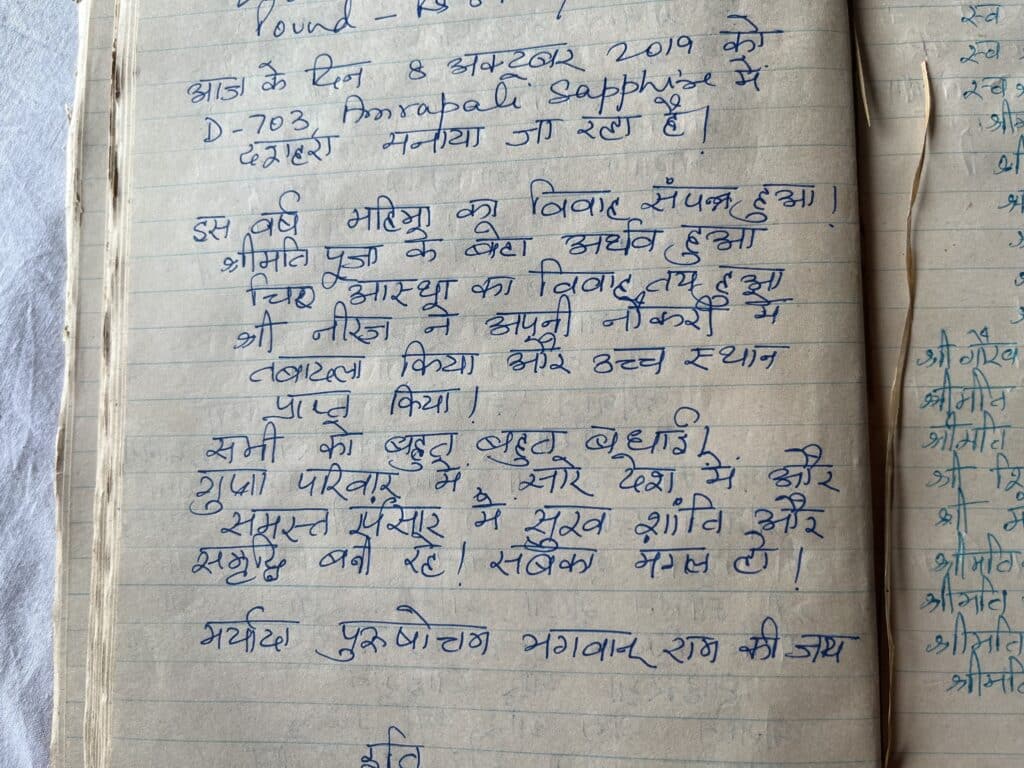
One of my fondest memories is watching my grandfather write down the name of each and every family member with utmost precision and dedication, making sure he didn’t miss anyone! It is not too often that you come across such a detailed record of family legacy in one place. I can only imagine how many unsaid and unspoken emotions it has carried and continues to carry until today.
